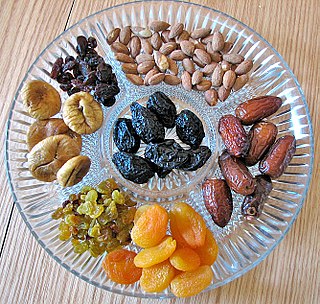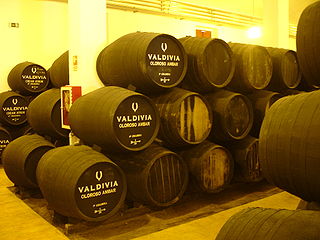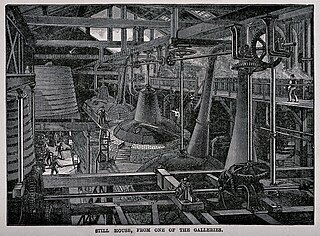 | |
| Founded | 1963 |
|---|---|
| Founder | TEKEL |
| Defunct | 2011 |
| Headquarters | Atatürk Forest Farm, Yenimahalle, , |
| Owner | TEKEL (1963–2004) Mey (2004–2011) Diageo (2011) |
Ankara Whisky was the first and only Turkish whisky produced in Turkey.
 | |
| Founded | 1963 |
|---|---|
| Founder | TEKEL |
| Defunct | 2011 |
| Headquarters | Atatürk Forest Farm, Yenimahalle, , |
| Owner | TEKEL (1963–2004) Mey (2004–2011) Diageo (2011) |
Ankara Whisky was the first and only Turkish whisky produced in Turkey.
In the 1960s, during a period of a closed and self-sufficient economy in Turkey, it was decided to produce a domestic whisky both to support domestic production and to prevent foreign exchange outflow from the country due to the import of alcoholic beverages. In this context, a small unit was established within the beer factory of TEKEL in Ankara in 1963, with special incentives given to Prof. Dr. Turgut Yazıcıoğlu by the government of the time. [1] The production volume of this facility, which was a first in the country, was determined as 200,000 liters per year. [2] Thus, the official process of manufacturing and branding the first Turkish whisky began.
Although production continued under TEKEL until the mid-2000s, the transition to an open economy in Turkey starting from the 1980s, which allowed the sale of imported alcoholic beverages, led to the gradual decline in the popularity of Ankara Whisky amid competition from many foreign whisky brands entering the market. Despite efforts to change the sales policy and promotion of the product, resulting in attempts to maintain its position in the domestic market, the production rights of Ankara Whisky were transferred to Mey İçki in 2004. After approximately a decade of production in this way, the brand was acquired by the global alcohol producer Diageo in 2011. Shortly after passing entirely into the hands of foreign investors, production of Ankara Whisky was discontinued. [2]
Throughout the production process, grains and rice were used as the main ingredients for Ankara Whisky. Scottish and American techniques were adopted for technical matters, and oak barrels were preferred for the aging of the whisky. The aging period was determined as 5 years. Ankara Whisky, which was released for over 50 years, had bottles of various sizes and types, but it is not definitively known whether they differed in aroma and taste. Furthermore, after production ceased, the copper stills, produced in Gaziantep, and Scotch-style copper pot stills used in manufacturing were purchased by a foreign company and sent to the United States, while the barrels were sent to France. [3]
Ankara Whisky underwent frequent changes in bottle design and emblem, using symbols such as the Hittite Sun Disk, the Grey Wolf recognized as a national symbol among Turks, and the local breed of cats in the city, known internationally as the Turkish Angora. With an alcohol content of 43%, the whisky was generally produced in 70 cl bottles. According to the personal website of Turkish whisky expert Bozkurt Karasu, Ankara Whisky had aromas of dried fruits, raisins, and dried plums on the nose, with a malty taste. The palate was described as harsh, with a burning sensation from young alcohol, and a spicy taste similar to Irish whiskey, with hints of young and damp wood, and dried sweet apricots. The finish was noted as short and spicy. [4]

Bock is a strong German beer, usually a dark lager.

Scotch whisky is malt whisky or grain whisky, made in Scotland.

Whisky or whiskey is a type of liquor made from fermented grain mash. Various grains are used for different varieties, including barley, corn, rye, and wheat. Whisky is typically aged in wooden casks, which are typically made of charred white oak. Uncharred white oak casks previously used for the aging of port, rum or sherry are also sometimes used.

Rye whiskey can refer to two different, but related, types of whiskey:

Dried fruit is fruit from which the majority of the original water content has been removed either naturally, through sun drying, or through the use of specialized dryers or dehydrators. Dried fruit has a long tradition of use dating back to the fourth millennium BC in Mesopotamia, and is prized because of its sweet taste, nutritive value, and long shelf life.

Jenever, also known as Hollands, genever, genièvre, peket, or sometimes as Dutch gin, is the juniper-flavoured traditional liquor in the Netherlands, Belgium and adjoining areas in northern France and northwestern Germany. As an EU and UK Protected Designation of Origin the use of the term jenever and its soundalikes can only be used if the product is made according to the specifications in Belgium, the Netherlands, two northern French departments and two German federal states. Gin was developed in Britain after introduction of jenever to the island.

Oloroso is a variety of fortified wine (sherry) made in Jerez and Montilla-Moriles and produced by oxidative aging. It is normally darker than Amontillado. Oloroso is usually dark and nutty.
Coffee cupping, or coffee tasting, is the practice of observing the tastes and aromas of brewed coffee. It is a professional practice but can be done informally by anyone or by professionals known as "Q Graders". A standard coffee cupping procedure involves deeply sniffing the coffee, then slurping the coffee from a spoon so it is aerated and spread across the tongue. The coffee taster attempts to measure aspects of the coffee's taste, specifically the body, sweetness, acidity, flavour, and aftertaste. Since coffee beans embody telltale flavours from the region where they were grown, cuppers may attempt to identify the coffee's origin.

Georgia is one of the oldest wine-producing countries in the world. The fertile valleys and protective slopes of the South Caucasus were home to grapevine cultivation and neolithic wine production for at least 8000 years. Due to millennia of winemaking and the prominent economic role it retains in Georgia to the present day, wine and viticulture are entwined with Georgia's national identity.

The use of wine tasting descriptors allows the taster to qualitatively relate the aromas and flavors that the taster experiences and can be used in assessing the overall quality of wine. Wine writers differentiate wine tasters from casual enthusiasts; tasters attempt to give an objective description of the wine's taste, casual enthusiasts appreciate wine but pause their examination sooner than tasters. The primary source of a person's ability to taste wine is derived from their olfactory senses. A taster's own personal experiences play a significant role in conceptualizing what they are tasting and attaching a description to that perception. The individual nature of tasting means that descriptors may be perceived differently among various tasters.

Chamoy is a variety of savory sauces and condiments in Mexican cuisine made from pickled fruit. Chamoy may range from a liquid to a paste consistency, and typically its flavor is salty, sweet, sour, and spiced with chilies.
This glossary of winemaking terms lists some of terms and definitions involved in making wine, fruit wine, and mead.
Nelson's Green Brier Distillery is a whiskey distillery located in downtown Nashville, Tennessee that produces different varieties of Tennessee whiskey and bourbons. The distillery offers daily public tours and tastings as well as a large mercantile shop with bottles, barware and apparel available for purchase. In July 2023, Nelson's Green Brier Distillery opened a newly renovated distillery restaurant and full-service bar at their 1414 Clinton St. Nashville, TN 37203 location. The same facility also now offers four new private event and dining spaces available to rent for corporate functions, weddings and celebrations of varying sizes.

Very Old Barton is a Kentucky Straight Bourbon Whiskey produced in Bardstown, Kentucky and aged 4 or 6 years by the Sazerac Company at its Barton Distillery. It is bottled in 80-, 86-, 90- and 100-proof (US) expressions. The 100-proof expression was once age stated at 6 years and bottled-in-bond, but those designations have been progressively removed as they have moved to blending younger whiskey. Tasting notes: "Rich, tawny amber hue. Lean woody aroma. A firm attack leads to a medium bodied palate with a drying woody character. Dry, warm finish."

Single pot still whiskey is a style of Irish whiskey made by a single distillery from a mixed mash of malted and unmalted barley distilled in a pot still. Somewhat similar to single malt whiskey, the style is defined by its inclusion of unmalted raw barley in the mash in addition to malt. However, small amounts of raw oats or wheat may have been used at times. This unmalted component is said to give the pot still whiskey a "spicier bristle" and "thicker texture" than the otherwise similar malt whiskeys. If the whiskey is not distilled completely on the site of a single distillery, then it may be termed pot still whiskey but not single pot still whiskey.
The idea of drinking whisky with food is considered outré by many, but there is a growing interest in pairing whiskies with complementary foods. The Scotch whisky industry has been keen to promote this. Single malts, pot-still whiskies, bourbons, and rye whiskies offer an interesting range of tastes and aromas, which are just as varied as wine. Jake Wallis Simons compares whiskies in bourbon casks to white wines, due to their lighter flavor, and those in sherry casks to red wines, with their greater fruitiness. A few Scottish cook books contain reference to the use of whisky in cooking, and a few traditional Scottish recipes that use whisky exist.

Rakı or raki is an alcoholic beverage made of twice-distilled grape pomace and flavored with aniseed. It is the national drink of Turkey. It is popular in many Mediterranean countries and is often served as an apéritif or with seafood or meze. It is comparable to several other anise-flavored liqueurs such as pastis, ouzo, sambuca, arak and aguardiente. The alcoholic content of raki must be at least 40%. The largest producer of raki is Diageo; Yeni Rakı is the largest brand.

Ale is a type of beer, brewed using a warm fermentation method. In mediaeval England, the term referred to a drink brewed without hops.
Stauning Whisky is a whisky distillery in Denmark. It is located in the western part of Jutland just south of a small village called Stauning near Skjern. The distillery was founded in May 2005 by nine Danish whisky enthusiasts and is the oldest whisky distillery in the Kingdom of Denmark. The idea was originally to create a whisky resembling the peated whisky produced on the Scottish isle of Islay. The production is done mainly by hand using local grain and water. Everything is produced following the traditional Scottish methods of whisky production. The preparations started in a building owned by one of the nine founders, formerly used as a private slaughter-house. The building was renovated and official permission obtained.

The following outline is provided as an overview of and topical guide to whisky:
Nose has sweet and dried fruits, raisins, dried plums. Very malty. Palate is a little harsh, young alcohol burns the tongue. Spiciness of unmalted barley is kind of nice, like Irish whiskey. Young and damp wood influence and hint of dried sweet apricots follow. Finish is pretty short and spicy.